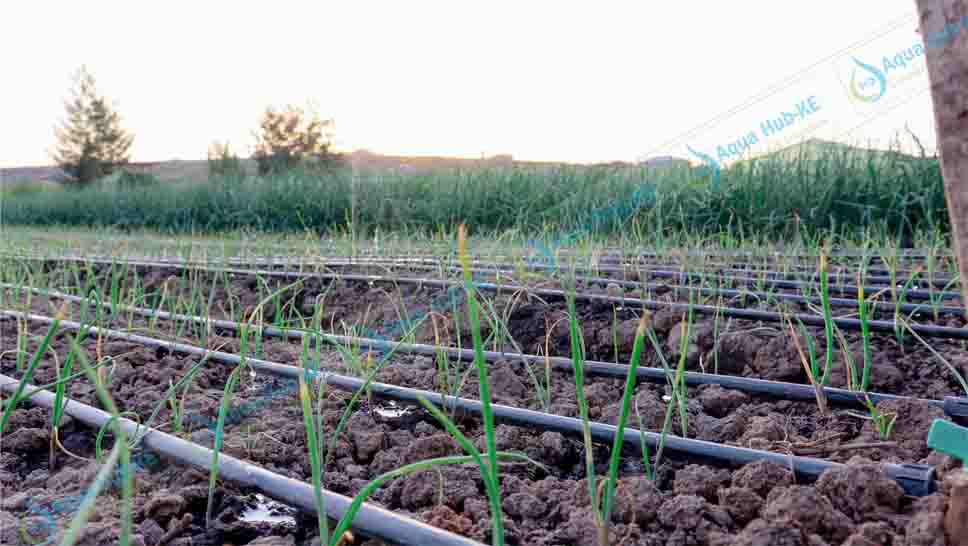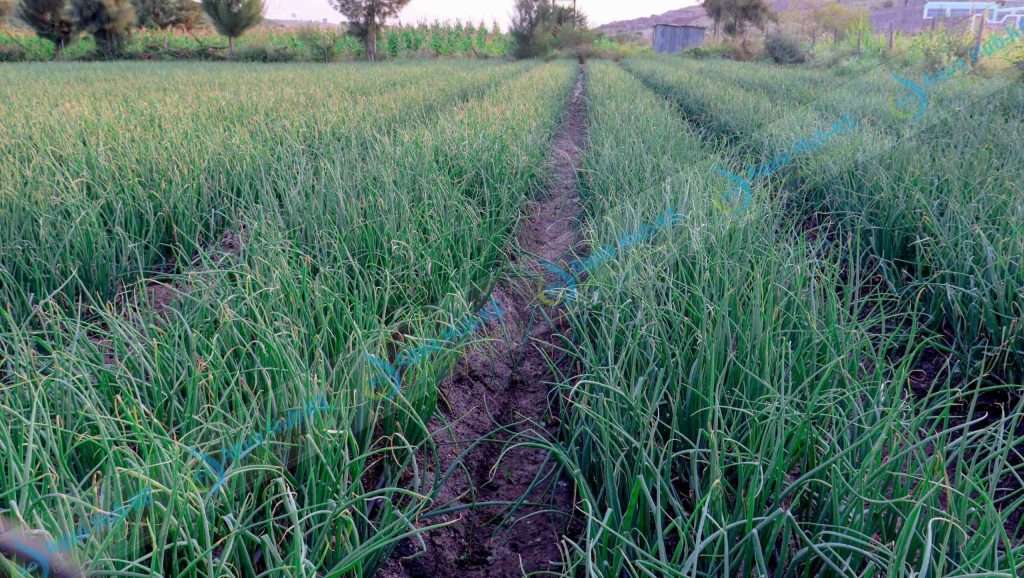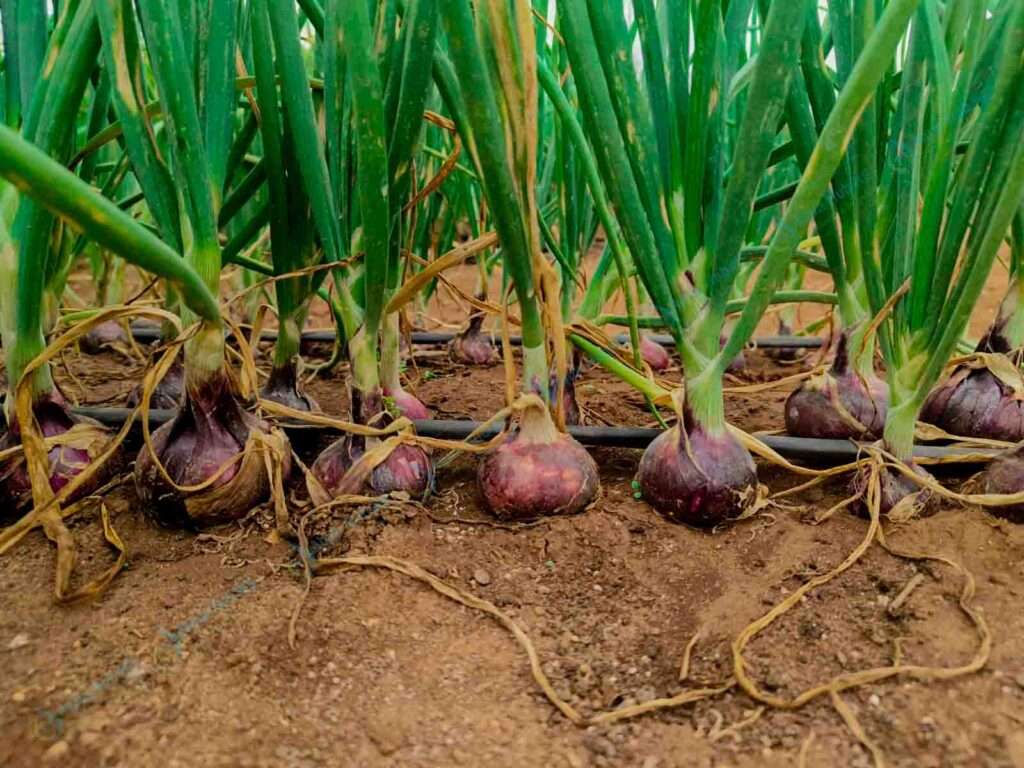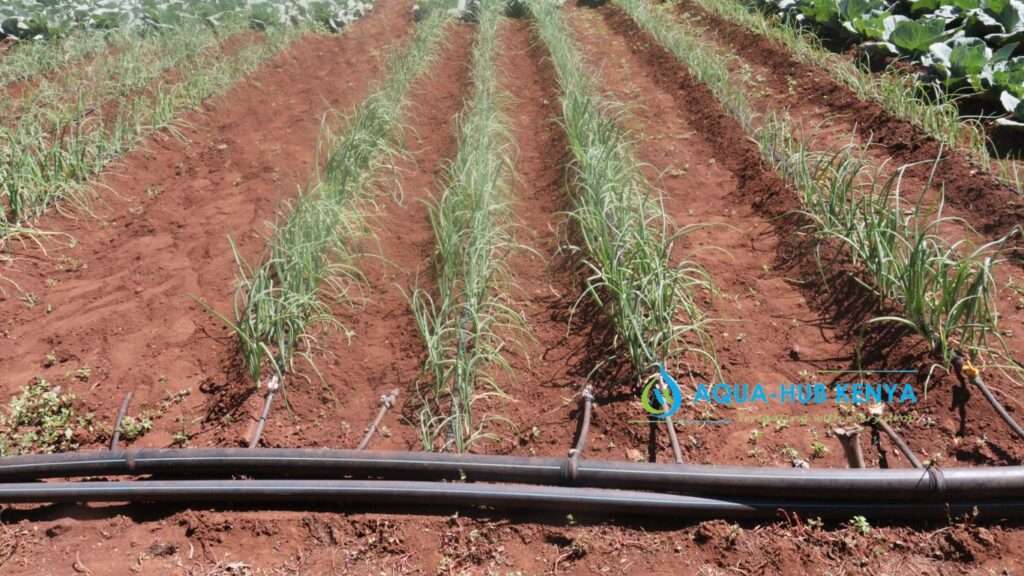Onion farming in Kenya by Aqua Hub
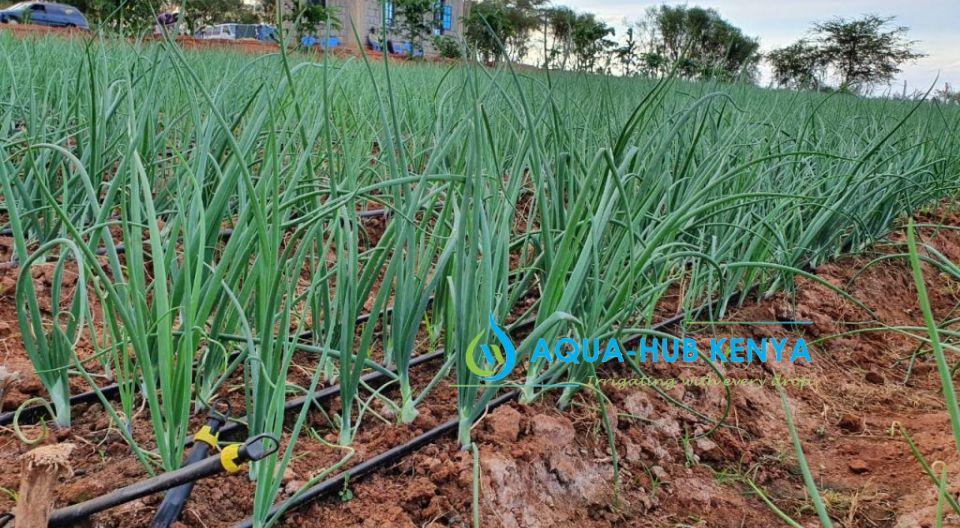
Onion Farming in Kenya | Onions are biennial plants that can be grown and harvested in short seasons. Bulb onions are the most common onion varieties grown in Kenya. This is because it is a profitable crop even though it may be a bit costly to produce.
You may happen to know the nutrient value of bulb onions; calcium, iron, potassium, vitamin b6 and medicinal values.
Approximate yield of Onions Per acre
On a good season you can produce a yield of about 16 tons of onions per acre. That can be equivalent to KES 960,000 assuming you sell at KES 60 per Kg of onions.
Popular Onion varieties in Kenya
- Red Creole F1
- Bombay Red
- Red Star F1
- Neptune F1
- Texas Grano
- Tropicana F1
- Red Pinnoy F1
Characteristics of Onion Varieties (Onion farming in Kenya)
| Onion Species | Colour | Maturity
(days) |
Yield per Acre (tons) | Storage Period |
| Red Creole | Red | 150 | 16 | 5–6 months |
| Bombay Red | Purple Red | 150 | 16 | 5–6 months |
| Red Star F1 | Dark Red | 110-120 | 16 | 5 months |
| Neptune F1 | Red bulb | 110-120 | 16 | 5–6 months |
| Texas Grano | White | 120 | 21 | 5 |
| Tropicana F1 | Deep Red | 90-100 | 25 | 5 |
Conditions for Onion farming in Kenya
Water Requirements
High water content during propagation and transplanting period.
Minimum water levels during growth stage and substantial amount at the bulb formation stage.
Temperature conditions
15-30 degrees Celsius
Soil Conditions
Fertile and well drained soils with a PH level of 6.0 to 6.8.
Tips for Onion Farming in Kenya
There are specific key concepts to mastering the art of producing the tasty and remarkable size of bulb. Pay attention to the following steps:
- Demand – Before you start growing onions, consider the market demand. While onions are in high demand, your marketing strategies will keep you in the game. A survey will enhance your marketing options while at the same time helping you decide the size of farm to start with.
- Growing Conditions – Always consider a good onion variety that will match your growing conditions.
- Resources – Consider your onion farming resources such as land, water and finances for labour and watering investments. Starting can be easier, but maintenance can be hard, hence you should plan properly.
Onion Propagation
Onions are propagated from seeds often sold in shops, agro-vets and certified seed companies in Kenya.
Procedure of bulb Onion farming in Kenya
To manage quality and proper onion plants, you should start onion seedlings from seedling beds.
Seedling beds can range in size depending on the target farm size. The right number of seeds for 1 acre can range from 0.8-1.2 kg of seeds.
The first thing during propagation is cultivating your land and preparing the soil for onion seeds propagation.
You can mix the soil with manure (compost manure is the best). 1 acre requires about 10 -15 tons of manure.
Once all the farm is ready, prepare the beds and then proceed to plant the seeds. Planting beds are 1 m wide and 30 cm apart.
Water the beds daily and wait for 1 week for them to germinate. Once they germinate, prepare a raised shade cover, could be a shade net or protected structure.
Give another 6 weeks for the seedlings to mature before transplanting.
Constant water is needed daily or 4 days a week for proper seedling health.
Transplanting
Transplant the seedlings on a farm, with planting holes of 20 cm spacing.
Chop off top leaves while transplanting to enhance faster growth.
Plant the seedlings 2-3 cm deep under the soil. Ensure half of the leaf prop remains above the ground.
Water the transplanted seedlings daily until the roots start forming and developing anchors.
Thereafter, you can install drip irrigation kits for water supply, but that depends on rainfall patterns and soil conditions.
When to Plant
It is important to know the right time to propagate and transplant onion seedlings to ensure a bumper harvest.
The proper planting time depends on the onset of the rain and water availability.
However, if you are growing under irrigation, you can plant at any time so long as you anticipate a proper demand during harvesting time.
The best time to grow onions is between September to December. Doing so, you can benefit from high demand in the dry seasons of January to March.
Common Pests and Diseases in Onion Farming
Common diseases that attack bulb onions are characterized by leaf rusting, blotches, leaf turning brown and wilting. The onion bulbs can also rot if stored in moist places.
- Onion Downy mildew
- Purple blotch
- Rust
- Pink Rot
- Neck Rot
How to Control Pests and Diseases
To eradicate common diseases that normally occur to onion plants, you need to stick to the practices below.
- Crop rotation
- Planting disease resistant onion varieties such Red Pinnoy F1.
- Spraying fungicides to lower fungal infections on your onion plants.
Drip kit for Onion Farming in Kenya
The essential method of watering onion plants is using onion drip kits. This method helps a lot because onions require less moisture flow in the soil. The slow moisture application enhances warmth and better conditions for onion bulb growth.
Drip irrigation also enhances balanced soil saturation therefore preventing leaching of calcium and nitrogen nutrients.
Fungal diseases can also be spread easily when onions receive water through foliage wetting methods.
Best Drip Kit Spacing for Onion farming
With onion plants an emitter or drip tape of 20 or 30 cm spacing is ideal for onion bulbs.
Best Drip Layout for Onion Farming in Kenya
Always use two or three drip lines per bed. One drip line can supply water to one or two onion plant lines.
Do you need a drip kit for onion farming in Kenya? Aqua Hub Kenya is the best place to get it. Our drip Kits cost KES 8 per meter length size. Full roles are 1000m long and cost KES 8,000.
We supply quality drip Kits and other irrigation systems at affordable prices.
Contact 0790719020

